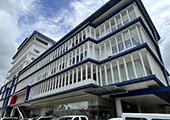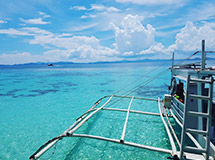
-
МјРЇСІИёСЖШИМі
-
 Malacañang Palace-Official Residence of the Pres
Malacañang Palace-Official Residence of the Pres 139,177
139,177 -
 Amana Water Park
Amana Water Park 115,789
115,789 -
 IFUGAO TRIBE
IFUGAO TRIBE 109,837
109,837 -
 Santacruzan-The Queen of all Filipino Festivals109,626
Santacruzan-The Queen of all Filipino Festivals109,626 -
 Water Refilling Station: an alternative source of drink107,904
Water Refilling Station: an alternative source of drink107,904 -
 LAMBANOG-THE POOR MAN\'S DRINK105,015
LAMBANOG-THE POOR MAN\'S DRINK105,015 -
 Christmas Parol [lantern in English]104,740
Christmas Parol [lantern in English]104,740 -
 HANGING RICE97,434
HANGING RICE97,434 -
 Taoist Temple94,320
Taoist Temple94,320 -
 Corn Fields in the Philippines90,800
Corn Fields in the Philippines90,800


Barot Saya [Female]
Baro't saya is the unofficial national dress of the Philippines and is worn by women. The name is a contraction of the Tagalog words baro at saya, meaning "dress (blouse) and skirt".
This indigenous mode of dressing of the natives of the Philippines was influenced during the Spanish Colonization of the archipelago. The half-naked style consisting of only the saya (long wrap-around) or tapis (knee-length wrap-around) covering the lower half of the body with bare upper torso, was gradually covered with a short-sleeved, collarless blouse called "baro", the Philippine cognate of the Malay "baju". Early Pre-colonial clothing of groups such as the Tagalog included both baro and saya in matching colors, which was exclusively worn by the women of upper-caste families.[1]
Under the Spanish colonization, the basic outfit had evolved into a many-layered ensemble of the: kimona or inner shirt; the baro outershirt with its usually gauzy materials, fine embroidery and wide sleeves; the pañuelo or piano shawl, starched to achieve a raised look; the naguas or petticoat (in the song "Paruparong Bukid," for example, naguas de ojetes refers to petticoats decorated with eyelet patterns which are visible underneath the saya); the saya proper, laid over the starched petticoat and bunched at the back to mirror the polonaise which was in fashion during that period, sometimes fashionably as de cola or with a finely embroidered train; and the tapis, a wrap covering the upper half of the saya.


Barong Tagalog [Male]
The Barong Tagalog is an embroidered upper garment which is known for being the Philippine national attire for men. Properly referred to as baro na Tagalog (in English: ЁАTagalog dressЁБ), this costume has a rich cultural tradition of more than four centuries, evolving to redefine its appearance and purpose.
The Barong Tagalog gained its popularity and respect in the 1950s when President Ramon Magsaysay chose to wear this garment in all his official and personal affairs, including his inauguration as President. President Ferdinand E. Marcos regime, who, in Batac Museum in Ilocos Norte exhibited his very first Barong Tagalog which he had obtained in 1949, issued a decree proclaiming the ЁАBarong Tagalog WeekЁБ (June 5 to 11) and officially designating the said dress as the ЁАnational costumeЁБ of Filipino men in 1975.
|

- ЁЄ
- ЁЄSalapan Festival
- ЁЄEmpanada Festival (Batac City)
- ЁЄPADUL-ONG FESTIVAL
- ЁЄKaumahan Festival in Barili
- ЁЄKAGASANGAN FESTIVAL
- ЁЄLalin Festival in Asturias
- ЁЄTinabuay Festival
- ЁЄGayon Bicol Festival
- ЁЄPINYASAN FESTIVAL in CAMARINES
- ЁЄMAGAYON FESTIVAL
- ЁЄBANAUAN FESTIVAL (BARANGAY.GUA
- ЁЄThe Tuna Festival in Gensan
- ЁЄPINTOS FESTIVAL BOGO CITY, CEB
- ЁЄPanaad sa Negros



- ЁЄ
- ЁЄ
- ЁЄCEBU WESTOWN LAGOON
- ЁЄGREEN LAGOON, COMPOSTELA
- ЁЄCALLAO CAVE
- ЁЄMOUNT PINATUBO IN PHILIPPINES
- ЁЄBATAN ISLAND in Batanes.
- ЁЄCALAGUAS ISLAND, CAMARINES NOR
- ЁЄAGHO ISLAND
- ЁЄCARAMOAN ISLAND IN CAMARINES S
- ЁЄSAMBAWAN ISLAND
- ЁЄPLACES TO VISIT IN LANAO DEL N
- ЁЄPLACES TO VISIT IN ZAMBOANGA C
- ЁЄPlaces to visit in Rizal Provi
- ЁЄHISTORIC TOWN OF VIGAN CITY, I














 ЧЪРкДхФФ ОпАЃЛѓДу ПРЧТ
ЧЪРкДхФФ ОпАЃЛѓДу ПРЧТ 12ГтПЌМг МвКёРкИИСЗ 1РЇ
12ГтПЌМг МвКёРкИИСЗ 1РЇ
 ГЛАд ИТДТ ОюЧаПј УЃБт
ГЛАд ИТДТ ОюЧаПј УЃБт
 ИЎОѓ ЧаБГ ЙцЙЎБт
ИЎОѓ ЧаБГ ЙцЙЎБт
 СжИЛПЁ ГЛАЁ ОЕ КёПыРК?
СжИЛПЁ ГЛАЁ ОЕ КёПыРК? УжАэАЁМККё РЬКЅЦЎ СёБтБт
УжАэАЁМККё РЬКЅЦЎ СёБтБт
 ЧіСіПЁМЕЕ ЧЪРкДхФФ!
ЧіСіПЁМЕЕ ЧЪРкДхФФ! ЧіСіПЁМ АЁДЩЧб
ЧіСіПЁМ АЁДЩЧб









 ЧЪРк ЦЏБо Ч§ХУ! ФСНУОюСі МКёНК
ЧЪРк ЦЏБо Ч§ХУ! ФСНУОюСі МКёНК


































